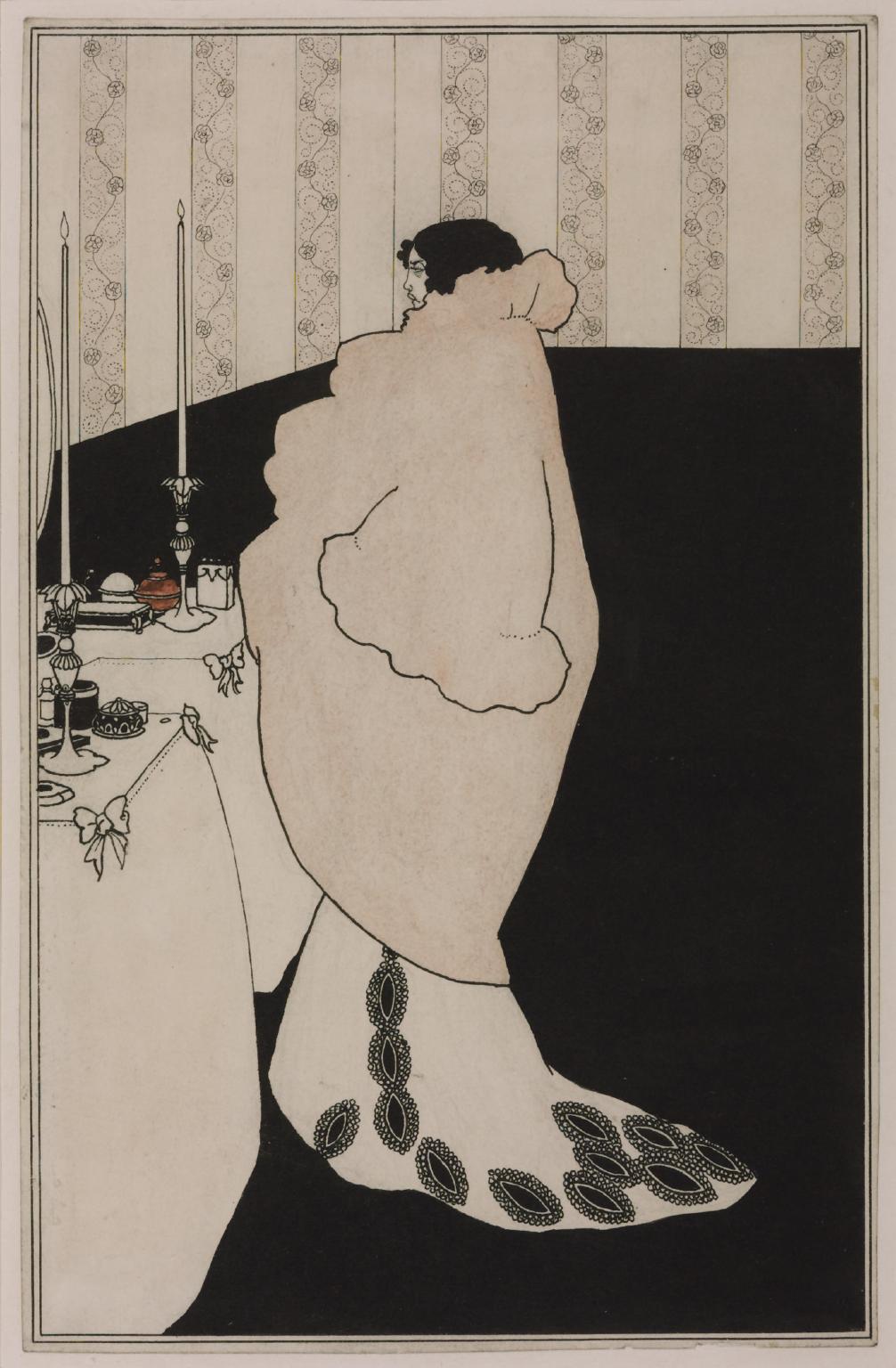This artwork by Beardsley is inspired by Alexandre Dumas fils' novel from 1852, a touching story about a courtesan who gives up everything for her lover. Initially, this piece was part of a collection showing a woman at her dressing table and was simply called Girl at Her Toilet. It's thought that Beardsley might have later decided to make it a portrayal of Marguerite Gautier, a character from Dumas's novel, especially since it looks a bit like an earlier drawing of his from 1890. Beardsley, who also suffered from tuberculosis and died from it like Marguerite, might have felt a connection with her character.
In this drawing, a woman is looking at herself in a mirror, a theme we also see in the works of artists like Dante Gabriel Rossetti and Edgar Degas, who often painted women in similar settings. Beardsley's drawing is quite stylish, with a big black shape taking up the bottom half and almost blending into the woman. Her arms are missing, and her face is just visible above a fancy, frilly collar. The drawing shows a strong influence of Japanese woodcuts, which Beardsley liked, with large, flat colors and silhouette effects. The most detailed parts are the items on the dressing table and the flower-patterned wallpaper. The woman's face shows dark shadows and a sad expression, which could suggest sickness or weariness. But overall, Beardsley focuses more on the patterns and design than on making her look realistic.
I loved this print from the first moment I saw it; it is so bold and decorative at the same time!
P.S. Pre-Raphaelites, Japanese woodblocks, Victorian eroticism—read about inspirations that shaped Aubrey Beardsley's unique style.


 Aubrey Beardsley
Aubrey Beardsley